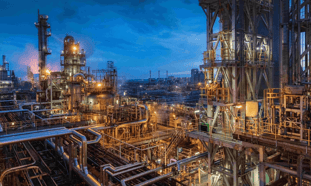New biphasic absorbent promises lower energy costs in carbon capture and mineralisation
A recent study in Nature reveals a breakthrough in reducing the energy demands of carbon capture, utilisation and storage (CCUS) through a novel biphasic absorbent technology.
Developed to improve carbon absorption and mineralisation efficiency, the findings could reshape the way industries approach carbon capture by simplifying processes and lowering costs, according to authors of the study.
Researchers explored the potential of a DEEA/AEP biphasic absorbent to capture carbon dioxide (CO2), followed by targeted phase separation and mineralisation.
In this process, only the CO2-enriched phase of the solution undergoes mineralisation – substantially cutting down on the volume of solution needed and thereby optimising energy use. “By focusing on the CO2-rich phase alone, we can minimise mineralisation solution requirements, reducing both equipment scale and energy consumption,” explained the study authors.
... to continue reading you must be subscribed
























